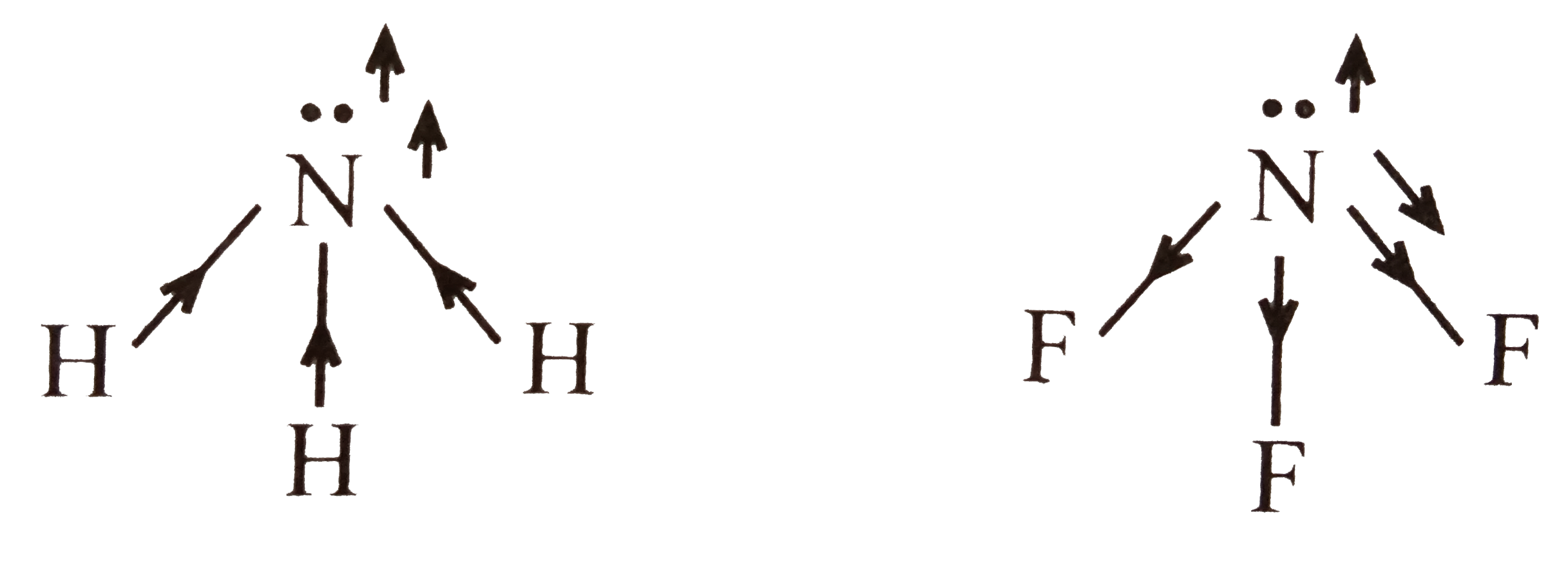The electronegaivity difference between N and F is greater than that between N and H yet the dipole moment of NH2 ( 1 .5 D) is larger than that of NF3(0.2D). This is because :
in NH3 as wellas NF3 the atomic dipose and bond dipole are in opposite directions
in NH3 the atomic dipole and bond dipole and bond dipole are the opposite directions whereas in NF3 these are in the same direction .
I NH3 as well as in NF3 the atomic dipole and bond dipole are in the saem direction
in NH3 the atomic dipole and bond dipole are in the same direction wheras in NF3 these are in opposite directions .
The correct Answer is:D
 .
.
Topper's Solved these Questions
- CHEMICAL BONDINGBOOK - P BAHADURCHAPTER - CHEMICAL BONDINGEXERCISE - Exercise2B
25 Videos
- CHEMICAL BONDINGBOOK - P BAHADURCHAPTER - CHEMICAL BONDINGEXERCISE - Exercise3
70 Videos
- CHEMICAL BONDINGBOOK - P BAHADURCHAPTER - CHEMICAL BONDINGEXERCISE - Exercise 7
11 Videos
- ATOMIC STRUCTUREBOOK - P BAHADURCHAPTER - ATOMIC STRUCTUREEXERCISE - Exercise 9
38 Videos
- CHEMICAL EQUILIBRIUMBOOK - P BAHADURCHAPTER - CHEMICAL EQUILIBRIUMEXERCISE - Exercise
134 Videos
Similar Questions
Knowledge Check
The electronegaivity difference between N and F is greater than that between N and H yet the dipole moment of NH2 ( 1 .5 D) is larger than that of NF3(0.2D). This is because :
Ain NH3, the atomic dipole and bond dipole are in the same direction, whereas in NF3 these are in opposite directionsBin NH3 as well as NF3, the atomic dipole and bond dipole are in opposite directionsCin NH3 the atomic dipole and bond dipole are in the opposite directions, whereas in NF3 these are in the same directionDin NH3 as well as in NF3, the atomic dipole and bond dipole are in the same directionThe dipoles moment of NF3 is less than NH3 because
ANH3 forms associated moleculesBF is more reactive then HCThe resultant of bond polarity is lessDThe resultant in individual polarities is opposed by the polarity of lone pairThe dipoles moment of NF3 is less than NH3 because
ANH3 forms associated moleculesBF is more reactive than HCThe resultant of bond polarity is lessDThe resultant of individual polarities is opposed by the polarity of lone pair in NF3
Dipole moment of NH3 is__________than NF3 .
View SolutionThe dipole moment of H2O2 is more than that of H2O but H2O2 is not a good solvent because :
View SolutionThe dipole moments of NH3NF3 and H2O are in the order.
View SolutionThe dipole moments of NH3,NF3andH2O are in the order :
View SolutionThe value of 'a' for NH3 is greater than that of N2. This means:
View Solution
